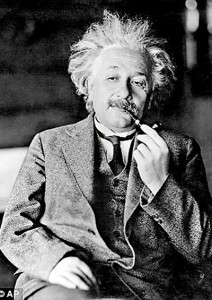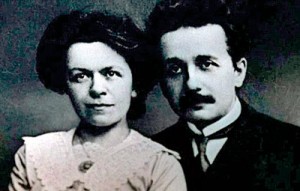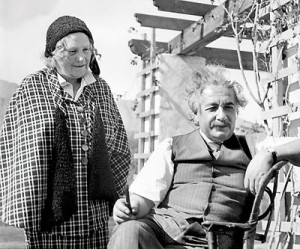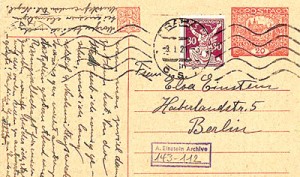Sunday Times 2
Inside the mind that came up with the world’s most famous equation
It is a treasure trove of letters, notebooks, post cards and papers charting the life of one of the world’s greatest ever scientists.

In other letters Einstein describes how fame was affecting his personal life, writing that 'The postman is my archenemy, I cannot shake myself loose from his slavery'
A mammoth collection of 5,000 searchable documents from Albert Einstein’s earlier years is being made freely available to the public on the internet.
The archive ranges from charming letters to his future wife Mileva Mari? after the birth of their first child to his battle to come to terms with fame and his stance as a pacifist in the wake of the First World War.
But it also highlights his prolific output as a physicist as well as lecture notes, extensive workings and a a telegram informing him he had won the Nobel Prize in physics in 1921 for the photoelectric effect.

An online collection of 5,000 Albert Einstein documents includes letters to his future wife Mileva Mari?. The pair are pictured together
It includes documents about his most famous equation E=mc2, which said that the energy ‘stored’ in objects is equal to their mass multiplied by the speed of light squared.
The transcribed and translated Digital Einstein Papers take readers on a journey through the life of the genius from 1879 to 1923, when he turned 44 – and anyone with an internet connection can now browse through the archive.
It includes letters from a 22-year-old Einstein to his former classmate Mari?, sent to her from Berne in Switzerland, in February 1902.
It reveals his joy at learning of the birth of his daughter.
Writing to his ‘beloved sweetheart’, he asks of baby Lieserl: ‘Is she healthy and does she already cry properly? What kind of little eyes does she have? Whom of us two does she resemble more? Who is giving her milk? Is she hungry? And so she is completely bald. I love her so much and I don’t even know her yet!
‘Couldn’t she be photographed once you are totally healthy again? Will she soon be able to turn her eyes toward something?’
In 1903, he wrote to his friend Michele Besso that he was living a ‘very pleasant, cozy life with my wife’.

The archive includes love letters Einstein (right) wrote to Elsa Löwenthal (left). The pair married after his first wife granted a divorce
‘She takes excellent care of everything, cooks well, and is always cheerful,’ he wrote.
The pair would go on to have two sons but Einstein later began an affair with his cousin, Elsa Löwenthal.
In one letter to her on May 7 1912, he writes: ‘Both of us are poor devils, each shackled to his unrelenting duties. I cannot tell you how sorry I am for you, and how much I would like to be something to you.
‘But if we give in to our affection for each other, only confusion and misfortune will result. You know this only too well.
He continues: ‘I love you. I would be happy if I were allowed to walk a few steps at your side even if only from time to time, or if I could otherwise rejoice in being close to you.’
He later married Löwenthal, who had children of her own, after Mari? granted a divorce.
In other letters he describes how fame was affecting his personal life, writing that ‘The postman is my archenemy, I cannot shake myself loose from his slavery’.
And the scientist, who died at the age of 76, sets out his pacifist stance following the horrors of the First World War writing to hi friend Carl Herman Unthan: ‘I must admit that it always pains me when the few little blossoms that grew in my flowerbed must suffer by being used to decorate the banner of nationalism.

The transcribed and translated collection shows how Einstein was a prolific writer of letters and postcards. Pictured above is a post card, from a separate archive, that he once wrote to his wife Elsa
‘For I am a pacifist and, in these times of hate, am steadily intent on encouraging reconciliation.’
Having documented the first 44 years of his life, the team behind the project plans to add more volumes to the archive as they are compiled and printed. The 14th volume, with more than 1,000 documents, is set to be released in January and will be digitised at a later date.
The website is a collaboration involving the California Institute of Technology (Caltech), Princeton University Press and the Hebrew University of Jerusalem. It includes both the German originals and the English translations.
Diana Kormos-Buchwald, director of the Einstein Papers Project at Caltech is quoted by the Los Angeles Daily News as saying: ‘This is an ongoing project. We have reached his 44th birthday.
‘People from China to South America and India and many other places where they don’t have access to these volumes will be able to access these materials.
‘These volumes are usually of interest to specialists, and we hope to widen the interest considerably.’
© Daily Mail, London
| EINSTEIN’S LOVE OF LETTERS Revealing his excitement about the birth of his first child in 1902, he wrote to Mileva Mari?: |

